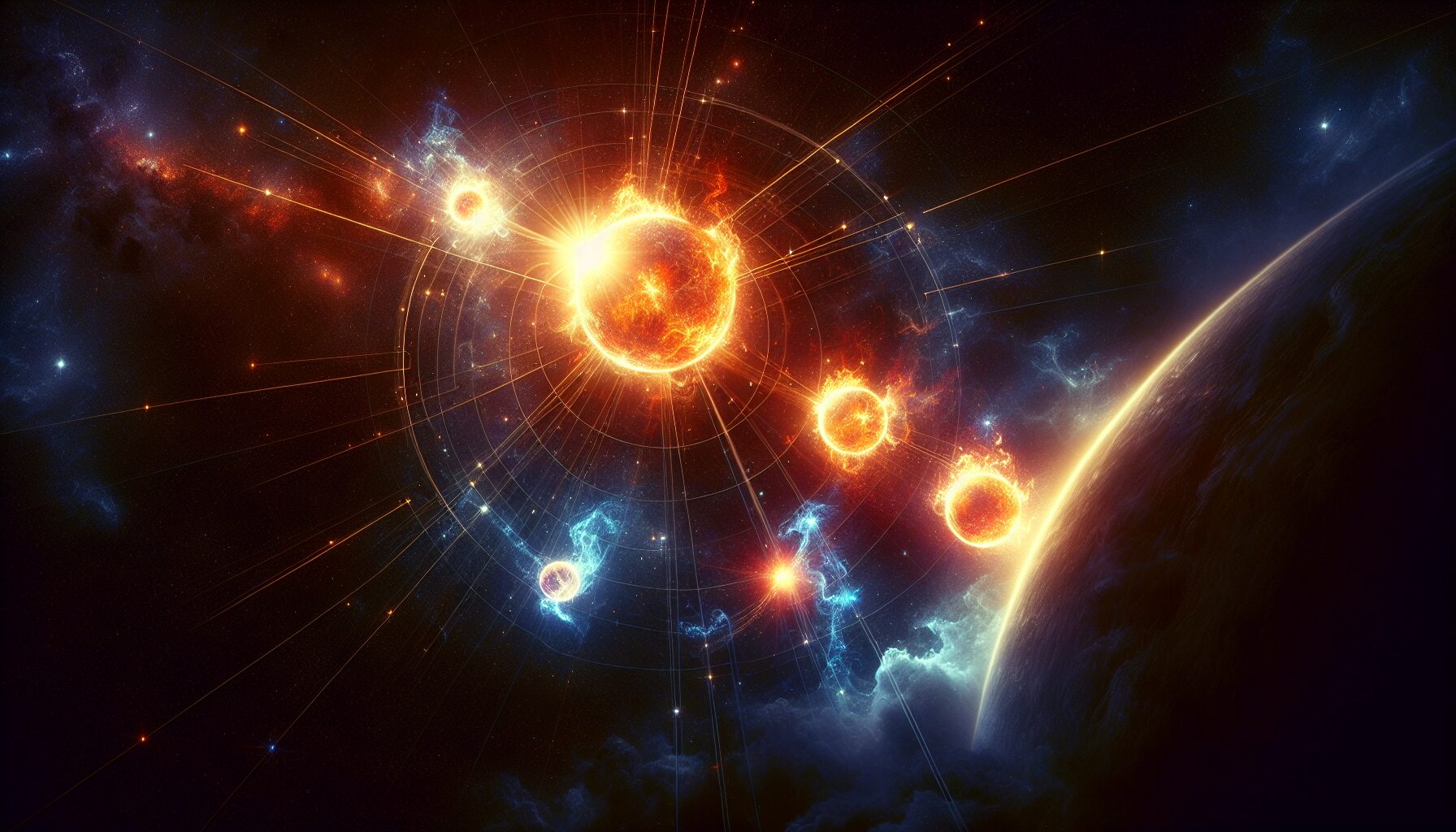Stars as Timekeepers – Burning Until Their Own Deaths
Introduction
The cosmos has always been a vast, enigmatic expanse, filled with mysteries that boggle the human mind. Among these enigmas lies the life cycle of stars—those luminous celestial bodies that have served as beacons in the night sky, guiding travelers and acting as cosmic timekeepers.
The Role of Stars in Celestial Timekeeping
Stars have been central to how we measure time and comprehend the universe. Since ancient civilizations, stars have governed the passage of time, marking seasons and aiding in navigation. According to NASA, “By mapping the motions and distances of stars, astronomers measure the expansion of the universe and unlock the secrets of its origin.”
The Life Cycle of a Star
The life cycle of a star is a testament to the dynamic, ever-changing universe. Every star begins its journey in a nebula, a vast cloud of gas and dust. Here’s an overview of the stages involved:
- Nebula: Stars are born within nebulae. The gravitational forces within these nebulae cause the gas and dust to collapse, forming protostars.
- Main Sequence: A star spends most of its life in this phase. Here, it fuses hydrogen into helium in its core—a process that can take billions of years.
- Red Giant/Supergiant: As the hydrogen depletes, the core contracts, and the outer layers expand. The star becomes a red giant or supergiant, depending on its initial mass.
- Death: A star’s death can result in various outcomes, such as a white dwarf, neutron star, or black hole, contingent upon its mass.
The Impact of Stellar Deaths
Each dying star contributes significantly to the cosmic tapestry. During the final phases of their lives, stars return materials to space, which later become part of new stars, planets, and even life itself. As Carl Sagan famously noted, “We are made of star stuff.” This cycle of creation and destruction is integral to the cosmic balance.
Stars and Human Perspective on Time
The appreciation of stars as timekeepers transcends mere scientific observation. They inspire introspection and art, inquiring about the ephemeral nature of human existence in contrast to the longevity of the stars. As astrophysicist Neil deGrasse Tyson articulates, “We are in the universe and the universe is in us.”
“Astronomy compels the soul to look upward, and leads us from this world to another.” – Plato
Modern Measurements and Discoveries
The advancements in technology have augmented our understanding of stellar dynamics. Space observatories, such as the Hubble Space Telescope, have provided unprecedented insights into stellar births, evolutions, and deaths.
Moreover, projects like the Gaia mission have been crucial in charting the positions, distances, and motions of stars, further honing our understanding of the galaxy’s structure and evolution. This, in turn, helps in measuring cosmic distances and ages with unparalleled precision.
The Future of Star Studies
The study of stars is far from over. Upcoming missions, including the James Webb Space Telescope, aim to delve deeper into the history and evolution of cosmic bodies. These efforts will hopefully unravel more secrets about the universe’s origins and the inevitable fates of these celestial timekeepers.

Comments